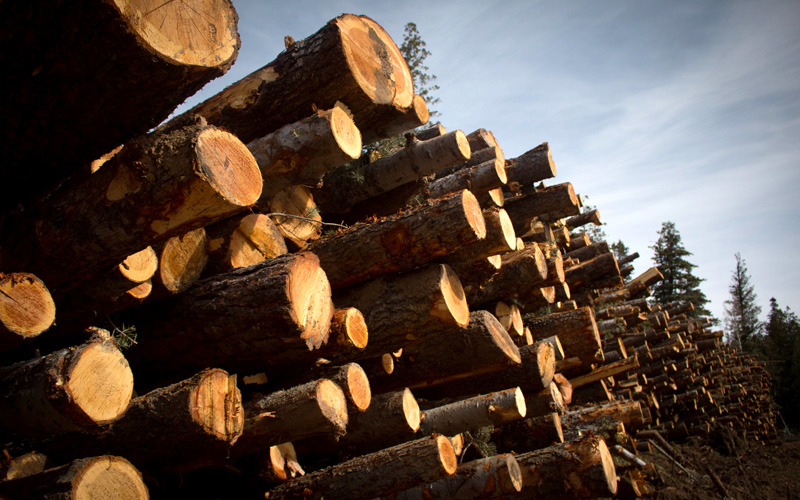
The Museum Fire prompted the evacuation of two neighborhoods north of Flagstaff in July. Hundreds of people have placed sandbags around their homes and businesses in anticipation of potential post-fire flooding. (Photo by Laurel Morales/KJZZ)
FLAGSTAFF – Fire investigators say the Museum Fire, which burned 1,961 acres near Flagstaff in July, started from a forest-thinning project meant to prevent wildfires. An excavator striking rock sparked the blaze, which forced neighborhoods to evacuate and cost $9 million to control, the U.S. Forest Service reports.
In a news release, Laura Jo West, supervisor of the Coconino National Forest, said it was unfortunate the fire was caused by thinning operations, but things could have been worse.
The thinning is part of the Flagstaff Watershed Protection Project, which is a partnership between the state, Flagstaff and Coconino National Forest to reduce the risk of severe wildfire and post-fire flooding in the Rio de Flag and Lake Mary watersheds.
“Fortunately,” West said, “some of the restoration work that had been completed previously in and around the wildfire area actually helped stop the fire from becoming larger and more destructive.”
Analysis shows 50% of the Museum Fire burned at low severity, 38% at moderate and 12% at high severity.
Fire investigators say rock strikes are possible during thinning project on steep slopes, and all proper equipment inspections had been conducted. The last piece of equipment was used 14 hours before the first report of fire, and the operator had completed a one-hour fire watch before leaving the job site.
The spark created “a heat source that hibernated until warm, dry, and windy conditions arrived that caused the heat source to grow into a small fire and was subsequently spread by the wind,” the Forest Service release said.
Flagstaff Mayor Coral Evans praised the restoration efforts.
“While the cause of the fire is unfortunate, it does not take away from the significant mitigating impact the treatment work had on the fire and subsequently the forest and our watershed,” she said. “The restoration work initiated by the Flagstaff Watershed Protection Project, in partnership with the Forest Service, is incredibly valuable and we remain committed to continuing this work and further protecting our watershed.”
In 2012, Flagstaff voters approved a $10 million bond in support of the Flagstaff Watershed Protection Project. The project was spurred in part by the Shultz Fire in 2010, which burned 15,000 acres in 10 days on the slopes of the San Francisco Peaks. The fire was followed by torrential monsoon rains, which resulted in numerous debris flows, significant erosion and substantial flooding of residential areas up to 4 miles downslope from the burn area, according to the Forest Service.
